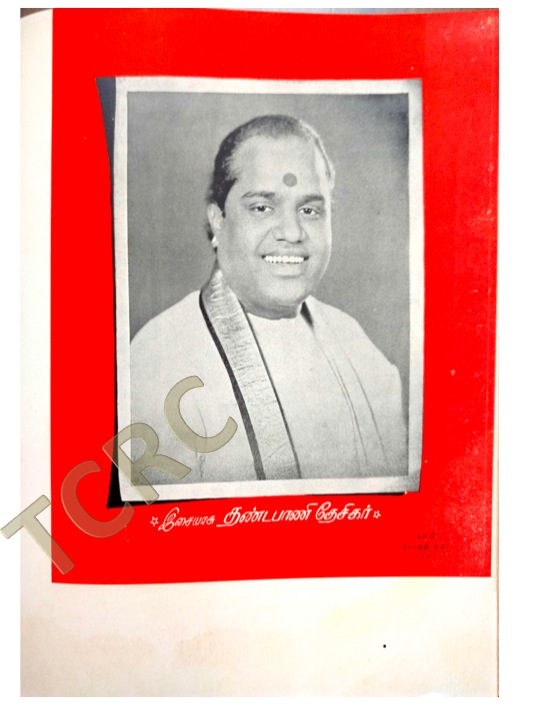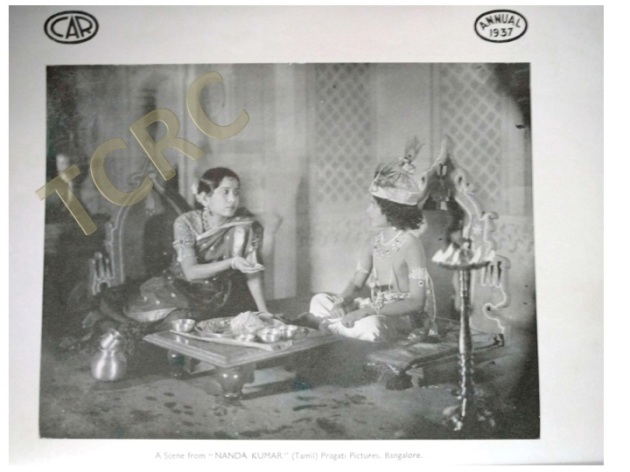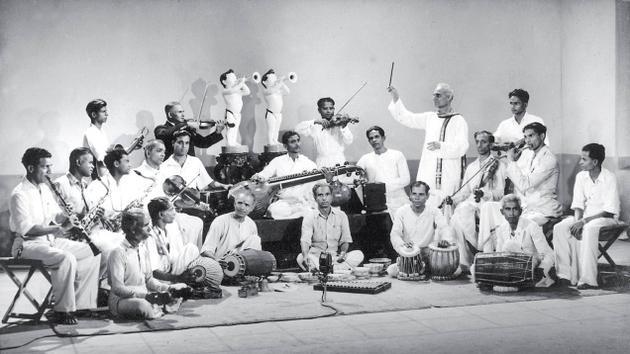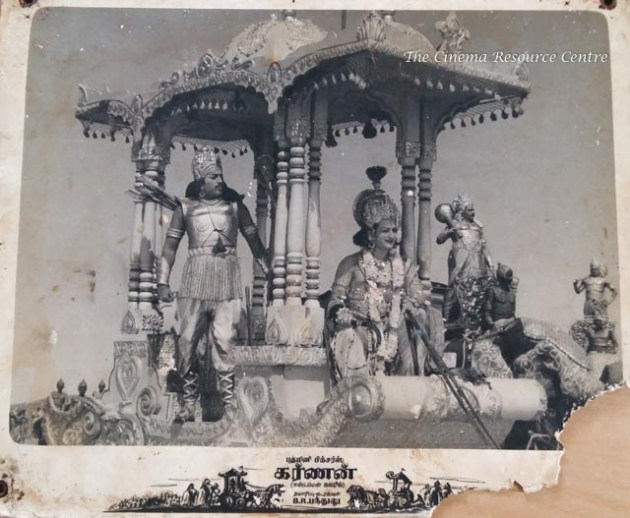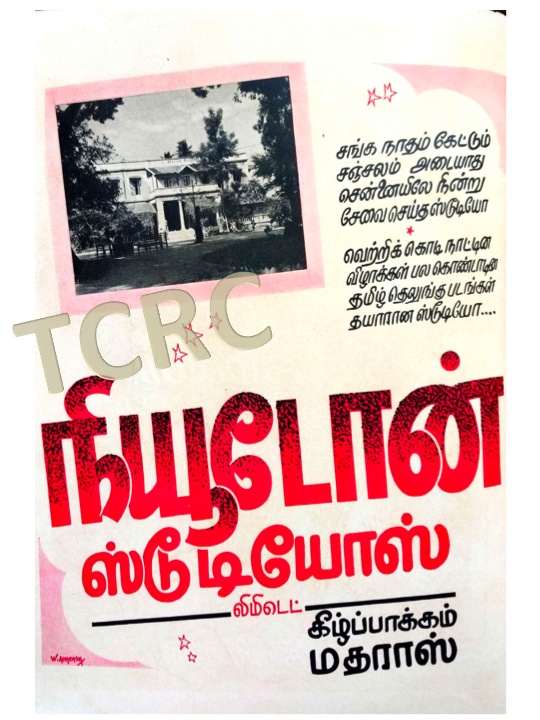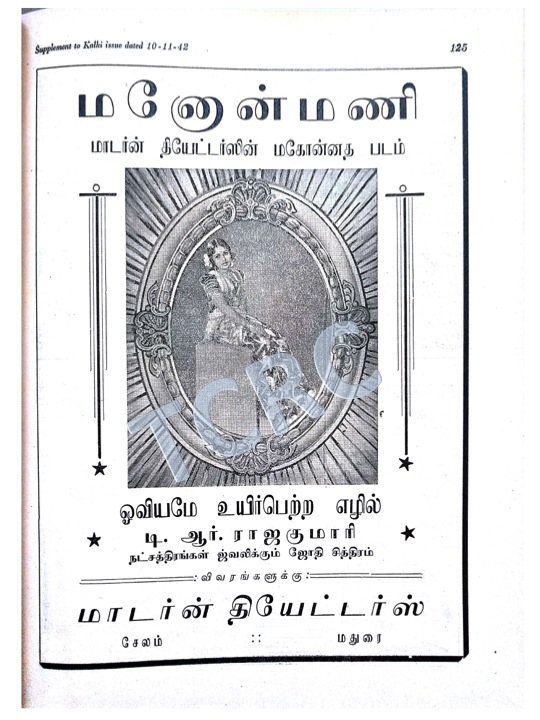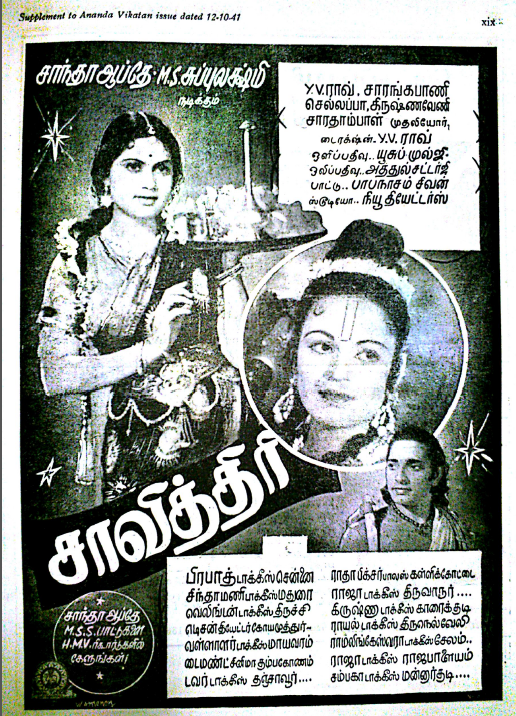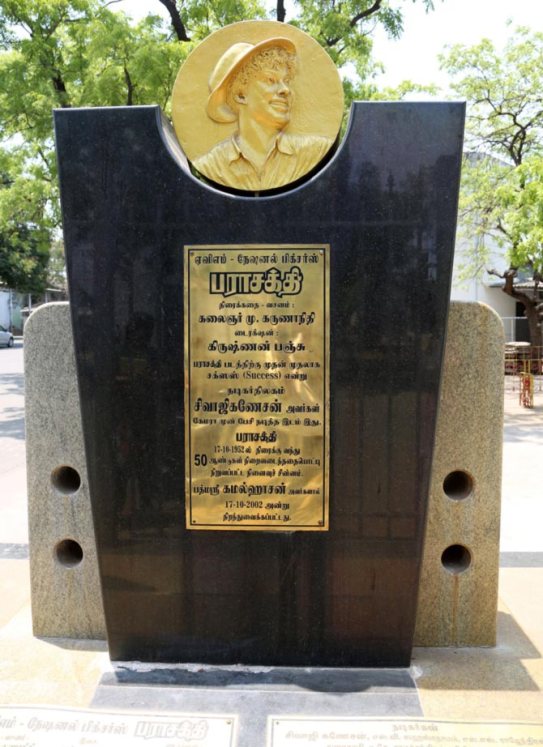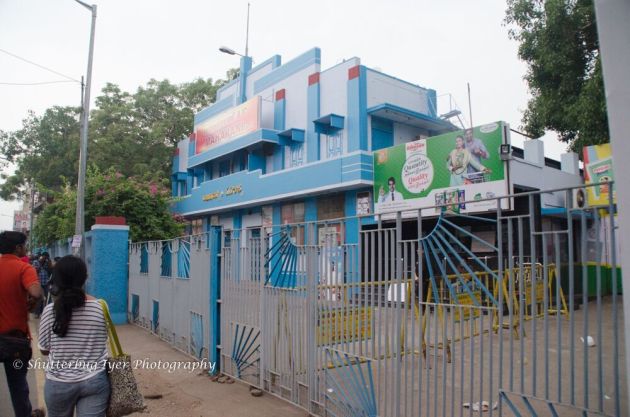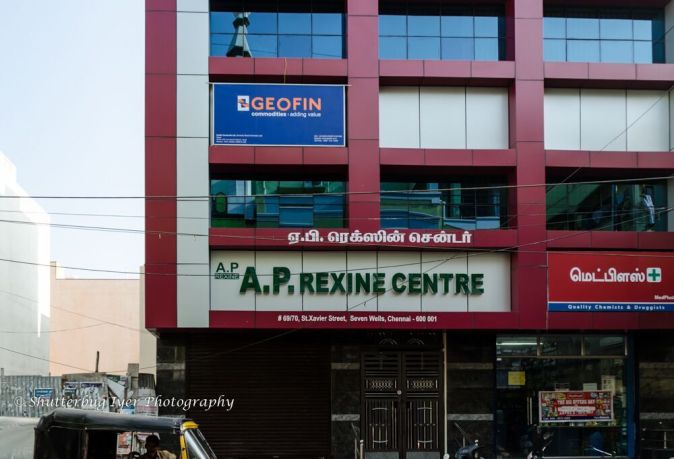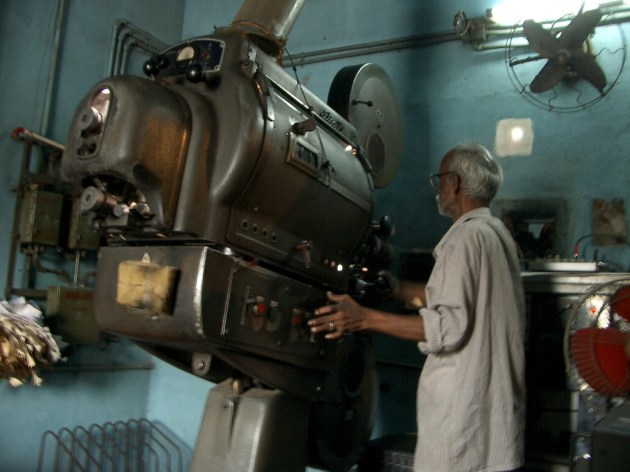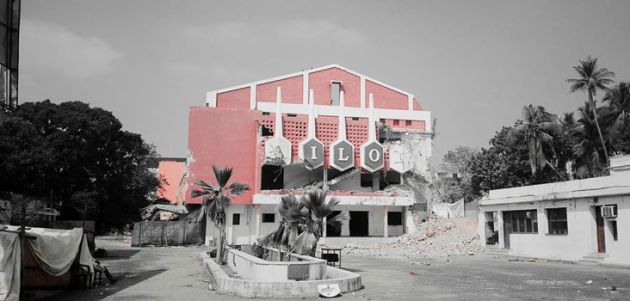TCRC welcomes our next contributor Mr.Sugeeth Krishnamoorthy who will be penning the series, From Book to Celluloid which will be focusing on important films that were adapted from literature.The first in this series is on the film Sevāsādan. – Editor
The early part of the 20th Century saw several changes take place in India.During this time, the ‘Freedom Movement’ intensified against the British with the rise of ‘nationalism’, ‘social reforms’ were debated deeply, a ‘cultural renaissance’ took place in several forms, and post-independent India started becoming a tangible reality.
Munshi Premchand’s novel Bazaar Ka Husn ( also called Sevasadan) deals with a host of social problems of its time, with ‘prostitution’ being its focal point. Premchand’s earlier novel Godaan had similarly dealt with social issues, but those typically concerned with land ownership and agricultural labour such as the exploitation of rural peasants. Sevāsādan, however, focusses more on an urban environment. Both novels involve deep debates around the multitutde of problems faced by society at that time, and look at these problems through various lens— Nationalistic, Sociological, Philosophical’and Practical. Issues like child-marriage, the dowry system and prostitution are discussed in detail in Sevāsādan.
Suman who is well brought up by her father, ends up in an unhappy marriage due to an unfortunate turn of circumstances, after her father is sent to jail. She moves to the city with her husband and has to live in challenging financial circumstances. Due to a series of fateful events in and around her life, and after she is cast out of her home by her husband, she turns to prostitution for survival.
The story deals with the challenges that Suman faces from leaving behind her ‘life of luxury’ to coming back to a normal ‘life of respect’. How did society and her own family members react when she came back? What was it that she lost, and what did she gain?
From a social perspective, the story is not just Suman’s. It speaks of a hypocritical society at that time, which cursed women who went into prostitution, but encouraged their use not only in the entertainment of the dissolute rich but also in for sanctimonious ritualism in auspicious events.
Behind closed doors, these women were desired by rich men who earned money using unethical means and splurged it on them. This group of people opposed the Anti-Nautch movement. The society at large, preferred to ‘ostracize’ these women, and did not give them a chance at rehabilitation.
There was another prevalent view. Many ‘prostitutes’ were exponents of art and culture, typically in the performing arts. The Mujra dance form had been patronized by the Mughal rulers, just as the “Devadasis” , who were exponents of the ‘Bharatha Natyam’, were patronized by South Indian rulers and temple authorities. However, with time, when the power of the Kings and the Temple declined under the British monarchy, thousands of women from these communities had to resort to common prostitution for survival. Yet, it was these very women who were summoned to perform the classical arts at weddings and ceremonies, supposedly for the advancement of culture and tradition, but were privately used to entertain male patrons in a more overtly erotic manner.
So, those supporting the Anti-Nautch movement were faced not just with the challenge of reforming the women indulging in prostitution and giving them a better life, but also with the re-purification of the cultural and artistic mores associated with them.
The main characters of the original book are Suman —who as a prostitute is known as ‘Suman Bai’—and lawyer Padam Singh, who takes immense trouble to reform prostitutes and reintegrate them into civil society. Then there are others: Suman’s father who goes to prison for a crime committed in a fit of anger, leaving the family orphaned; a loving uncle who takes care of Suman and her sister Shanta until their marriage; Bholi, a prostitute, who introduces Suman to Dalmandi —the market place—when she has no one to turn to for help; Padam Singh’s nephew, Sadan, who is a spoilt brat, who loiters around Dalmandi; and Padam Singh’s wife Subhadra. There are also other minor characters, Hindu and Muslim administrators, who carry forth debates on social change and their implementation.
Sevasadanam was translated and published in Anantha Vikatan magazine by Ambujamma, a supposed social worker. Director K. Subrahmanyam substantially modified the script from the eponymous book to suit the film version.
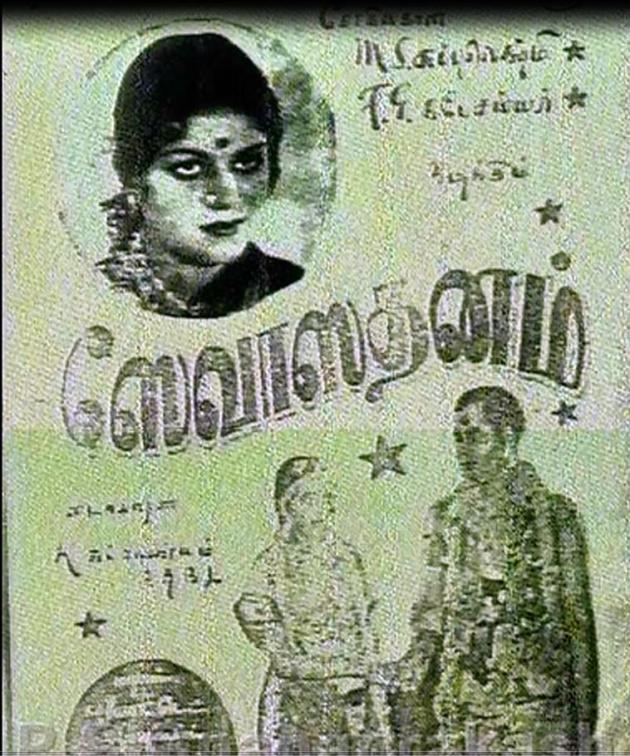
PC: mstribute.org
The replacement of the Mujra culture for a south Indian counterpart must have been easy for the director as there was a parallel social movement in South India against the ‘Dasi’ system.The elements that formed the crux of the original book – the extended debates around the socio-cultural problems faced by Society and measures needed to eradicate them—have mostly been excised, possibly because it would have been difficult to make them visually engaging. Instead, K Subrahmanyam focuses entirely on the human elements of the story, and cuts out the philosophical and ‘debate’ oriented elements.
Subrahmanyam has taken the liberty of adapting the screenplay to suit the sensibilities of a South Indian audience. For instance, he changes Suman’s character to Sumathi (M.S.Subbulakshmi) gets married to a much older man, Eswara Sarma ( F.G.Natesa Iyer), a departure from the original story but an important statement on an equally important social problem of its time. Secondly, he introduces a new character, Gundamma, Eswara Sarma’s sister who constantly taunts Sumathi.
Vakeel Padmanabha Iyer’s character is more or less the same as the character played by Padam Singh, and his wife Subhadra (Jayalakshmi Varadachariar’s swan song) retains the original name.[1]Subrahmanyam introduces another character, Suguna, who is the daughter of the prostitute Kamalesh Kumari—possibly an analogous character to Bholi.
Sumathi is continuously harassed in her house, by her husband Eswara Sarma and her sister-in-law. She is given moral support by Vakeel Padmanabha Iyer and his wife, Subadra. On suspecting her fidelity one day, Padmanabha Iyer throws Sumathi out of the house. Later, he learns about the evil ways of his sister and in disgust tears his sacred thread.2 Sumathi later becomes ‘Sumathi Bai’, resulting in the cancellation of her sister Shanta’s marriage,as in the original,.
But from here on, Subrahmanyam seems to have diverged in some aspects. The book features Suman’s husband becoming a fakir and spreading the message of cultural reform. However, in the film, Eswara Sarma is seen to have become the leader of a Nationalist movement called ‘Desa Sevika’. Sumathi, her sister Shanta, and Kamalesh Kumari come together to start ‘Sevasadan’, a home to look after destitudes and orphan girls.
In the original, Shanta gets married to Sadan and Suman is forced to leave her home, leaving her lonely and abandoned, questioning her very own existence. What happened to Suman later, forms the underlying theme of the story.
The film was the second in a trilogy of social and Nationalist films made by ace Director K. Subrahmanyam—Balayogini (in Tamil and Telugu), Sevasadan and then Thyagabhoomi. In this film, the director introduced several iconic actors like M.S.Subbulakshmi, F.G.Natesa Iyer, S.Varalakshmi (who played Kamal Hasan’s mother in Guna) and Seethalakshmi (the widow who played Gundamma)[3].
According to Anantha Vikatan[4], the film also introduced for the first time, playback recording of songs[5].
There are several reports available on the internet that cite Sevasadanam as a ‘critical and commercial’ success. This is untrue as. K. Subrahmanyam himself admitted, in an interview, that although the film was a ‘critical success’, it was a commercial failure.[6]
Most unfortunate, however, is the fact that no copy of this film is known to exist. Reviews of the films can be found here and there, and usually no more than 2 to 3 pages. Most of the information published has been ‘rehashed’ over and over, with possibly nothing new. It is for this reason that the primary book reference becomes more important, giving immense depth to each aspect of its film version. Reading the book and then the film reviews patiently gives the viewer a better understanding of the film, which, we can only hope, resurfaces from some hidden corner of the earth, to give us a glimpse into our own past.
REFERENCES:
[1] ‘I Won’t do it Again’ – Jayalakshmi Varadachariar – Talk A Tone October 1944 – NFAI – Jayalakshmi Varadachariar explains her disillusionment with Films and says that she will never act again.
2 This scene apparently raised a storm by the ‘conservatives’ against K.Subrahmanyam, compounded by the director showing, for the first time, a real widow playing a role on screen.
3 There are some reports that say that the widow was first introduced in Balayogini.
5 Prior to this, songs were recorded live. The orchestra played the music, while the actors sang the songs themselves. This was the reason that early cinema featured legendary singers like M.K.Thyagaraja Bhagavathar, S.D.Subbulakshmi and P.U.Chinnappa as actors.
6 “Mythology – A Missionary of Hindu Religion” – Director K. Subrahmanyam Speaks Out, TALK A TONE, Nov. 1943 – NFAI.
OTHER LINKS :
- Sevasadan Book Link :- https://www.amazon.in/Sevasadan-Munshi-Premchand-ebook/dp/B01N5OCM1J?_encoding=UTF8&*Version*=1&*entries*=0&deviceType=desktop&redirect=true
- NFAI – National Film Archive of India, Pune.
- Sevasadam Songs – http://mio.to/album/Sevasadanam+(1939)


